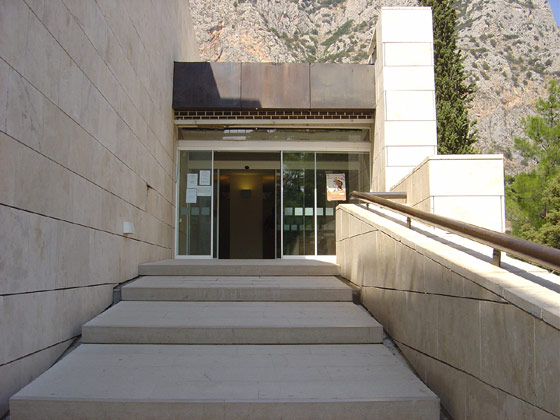 ARCHAEOLOGICAL MUSEUM OF DELPHI
ARCHAEOLOGICAL MUSEUM OF DELPHI
 |

The Archaeological Museum of Delphi, one of the most important in Greece, exhibits the history of the Delphic sanctuary, site of the most famous ancient Greek oracle.
Its rich collections are comprised primarily of architectural sculpture, statues and minor objects donated to the sanctuary. These reflect its religious, political and artistic activities from its early years in the eight century BC to its decline in Late Antiquity.
The museum is housed in a two-storey building with a total surface area of 2270 square metres, with fourteen exhibition rooms. It has a conservation laboratory for pottery, metal objects and mosaics.
The permanent exhibition of the Archaeological Museum of Delphi focuses on the history of the Delphic sanctuary and oracle, covering the long time span from prehistory to Late Antiquity.
Most of the exhibits were donated to the sanctuary during its period of great prosperity, from Archaic Greek to Roman times.
The exhibits are presented in chronological order and by context allowing visitors to understand the periods of floruit and decline of the sanctuary, the wealth of the different donators, the identity of the various artistic workshops and the urban and demographic development around the sanctuary.
The exhibition focuses mainly on the art of the Archaic period, on metal and marble offerings rather than on pottery, and on monumental architectural and sculptural groups rather than on domestic or funerary assemblages. Some particularly impressive exhibits, such as the famous bronze Charioteer, are displayed separately.
|
|



